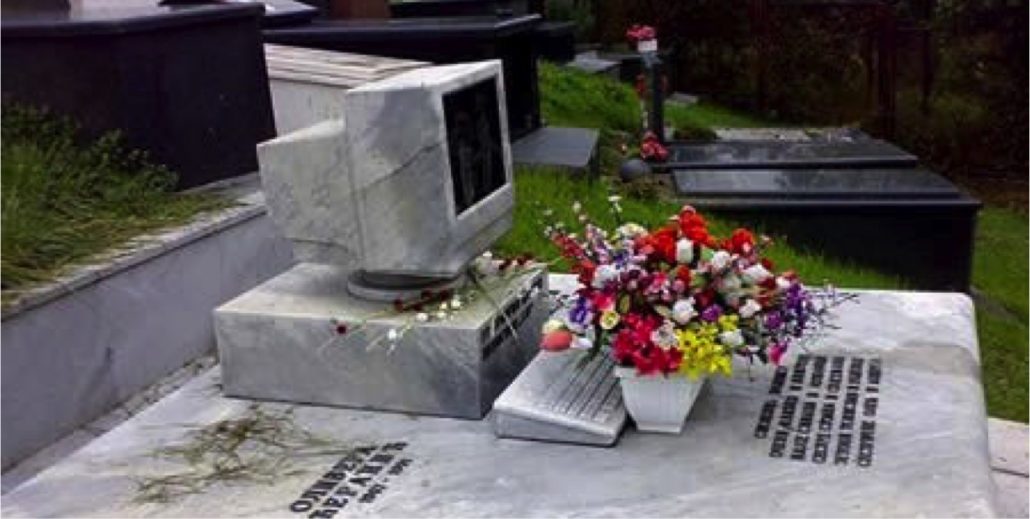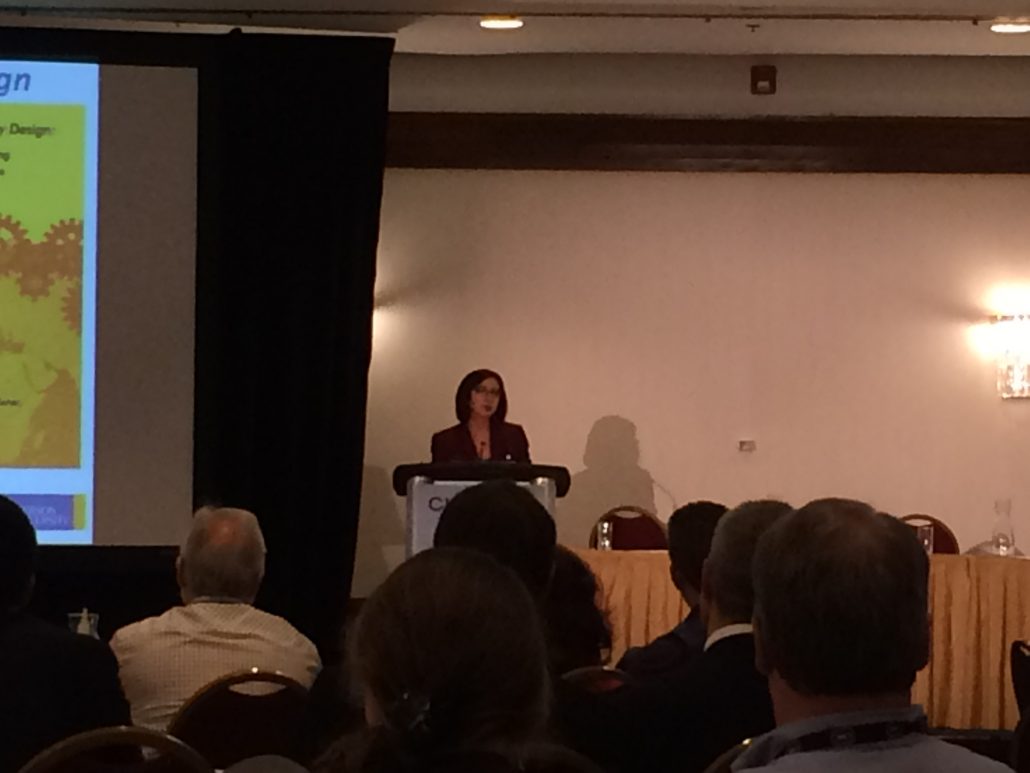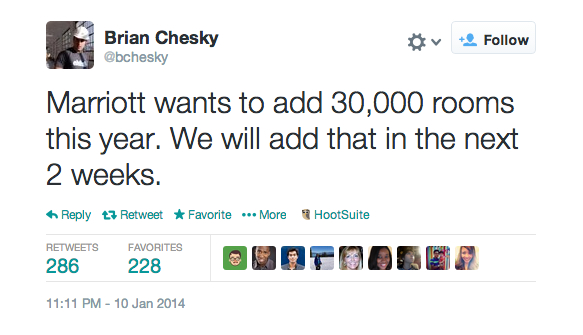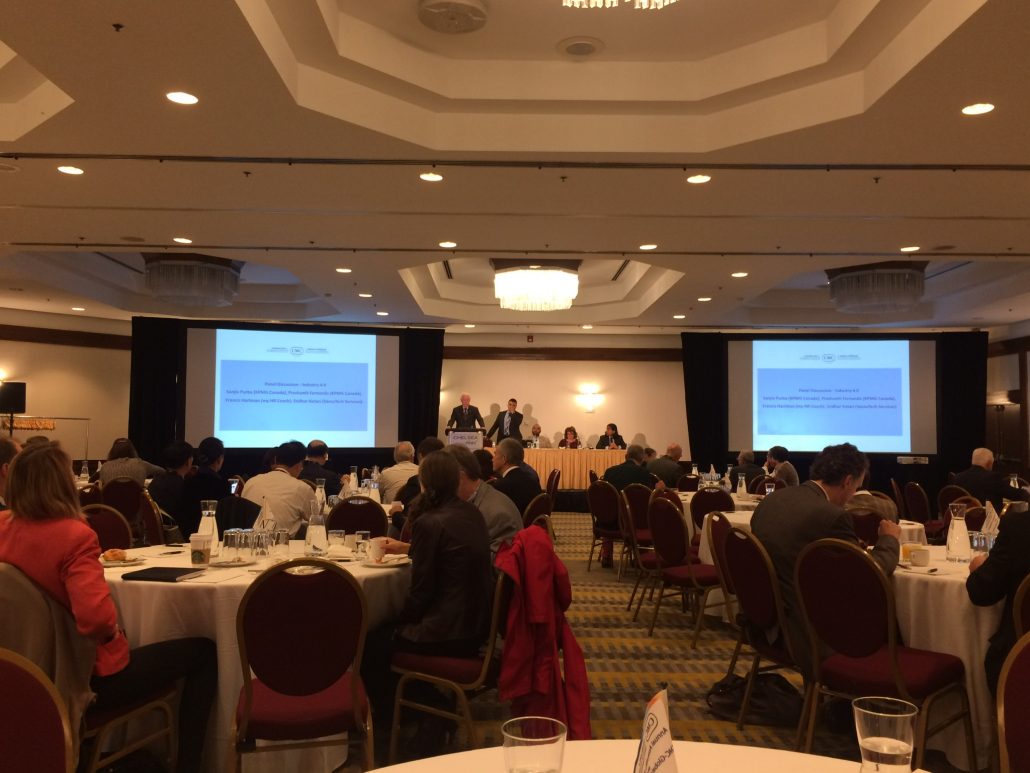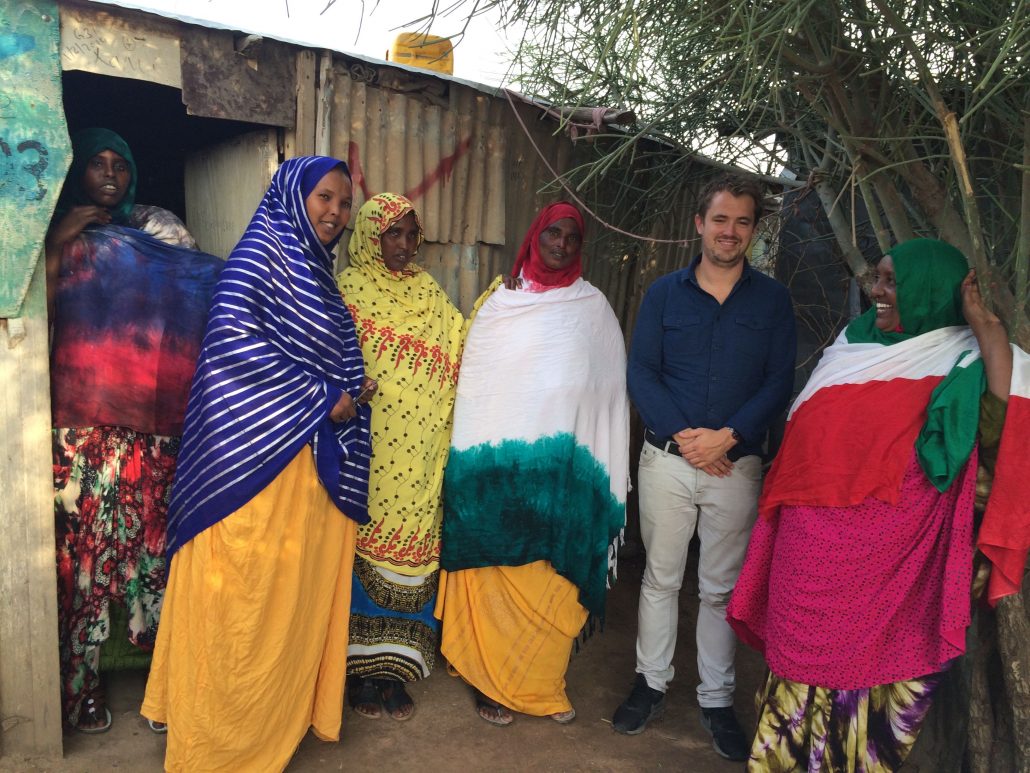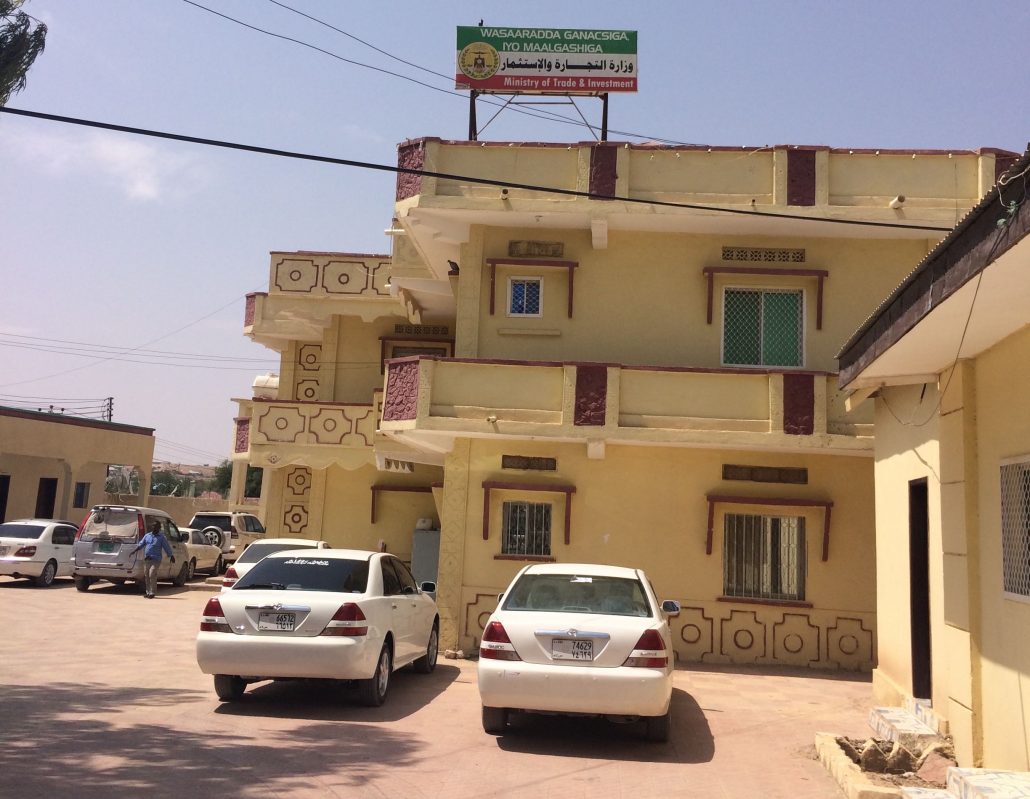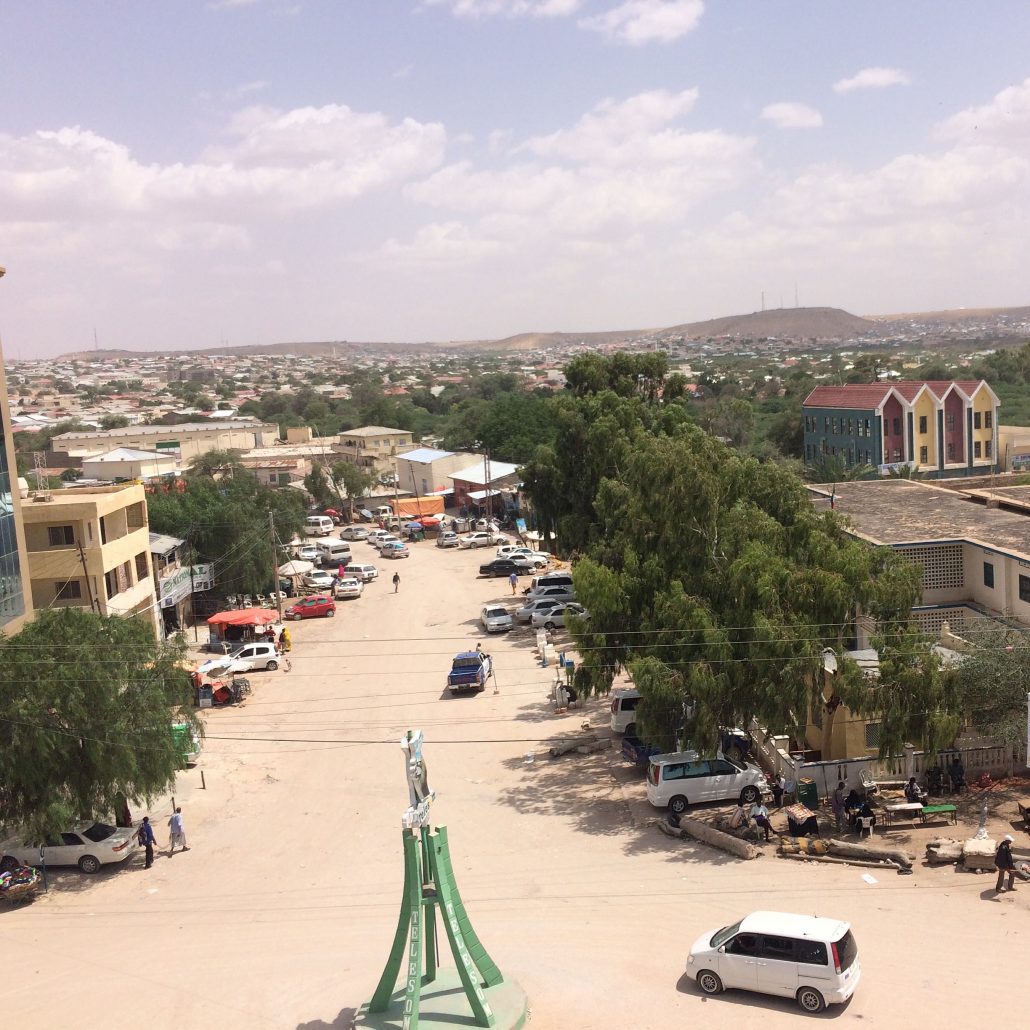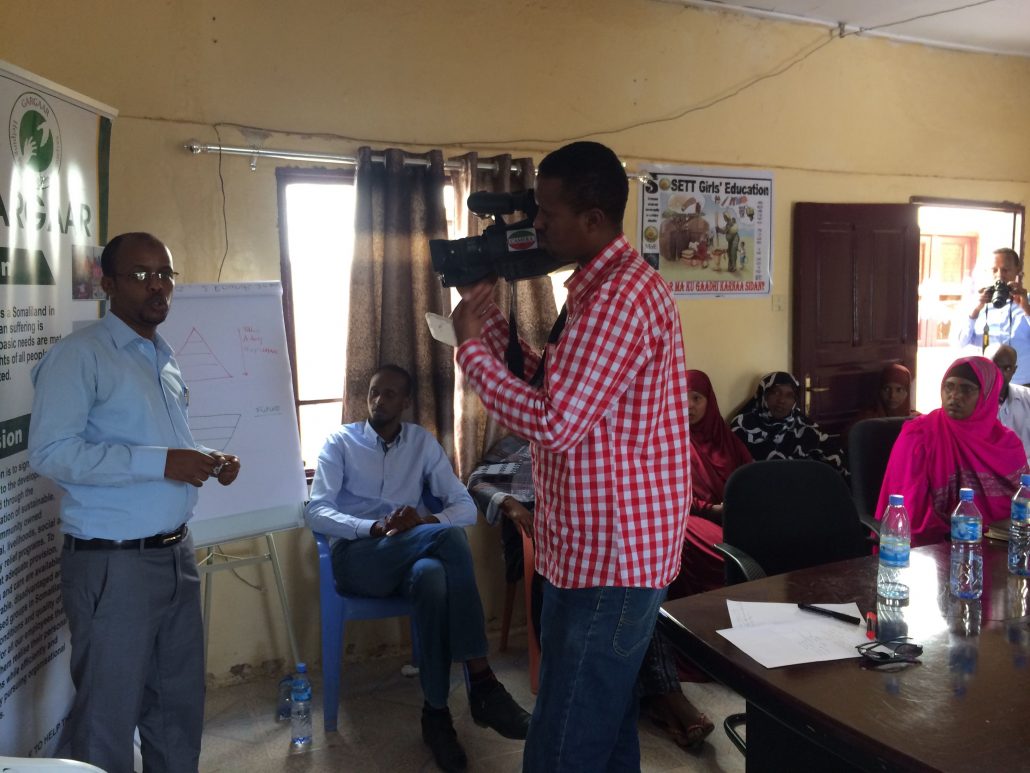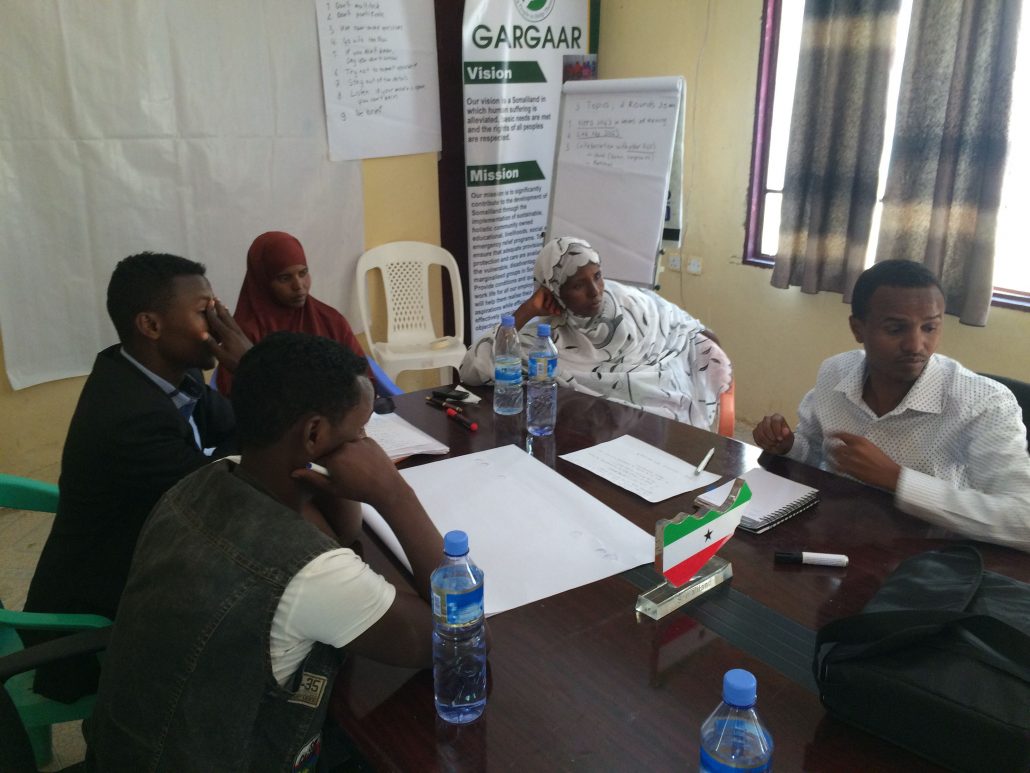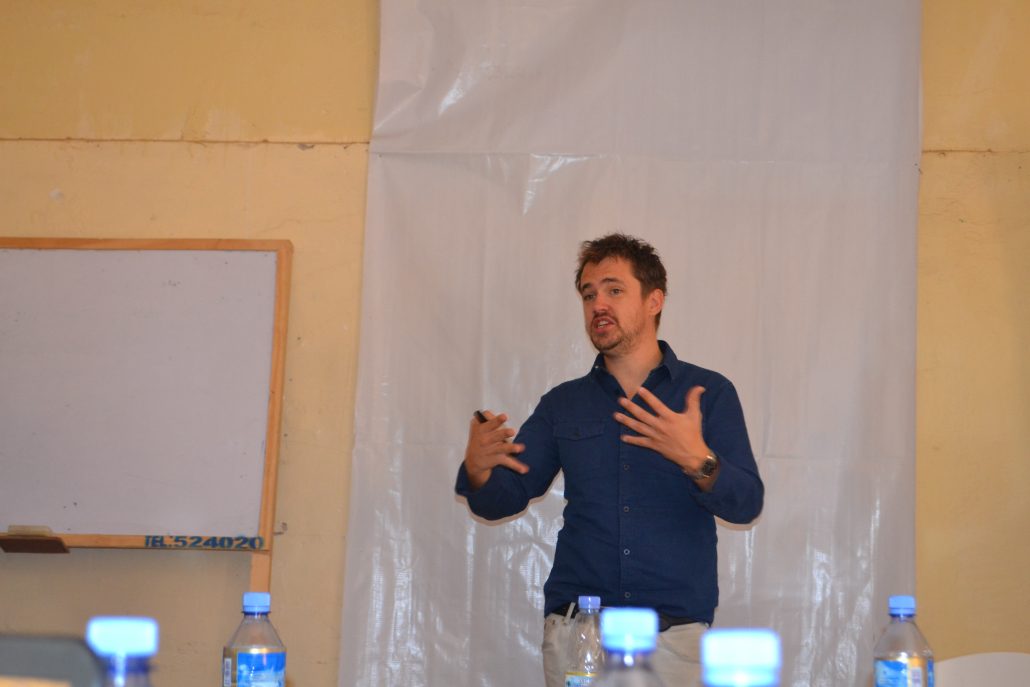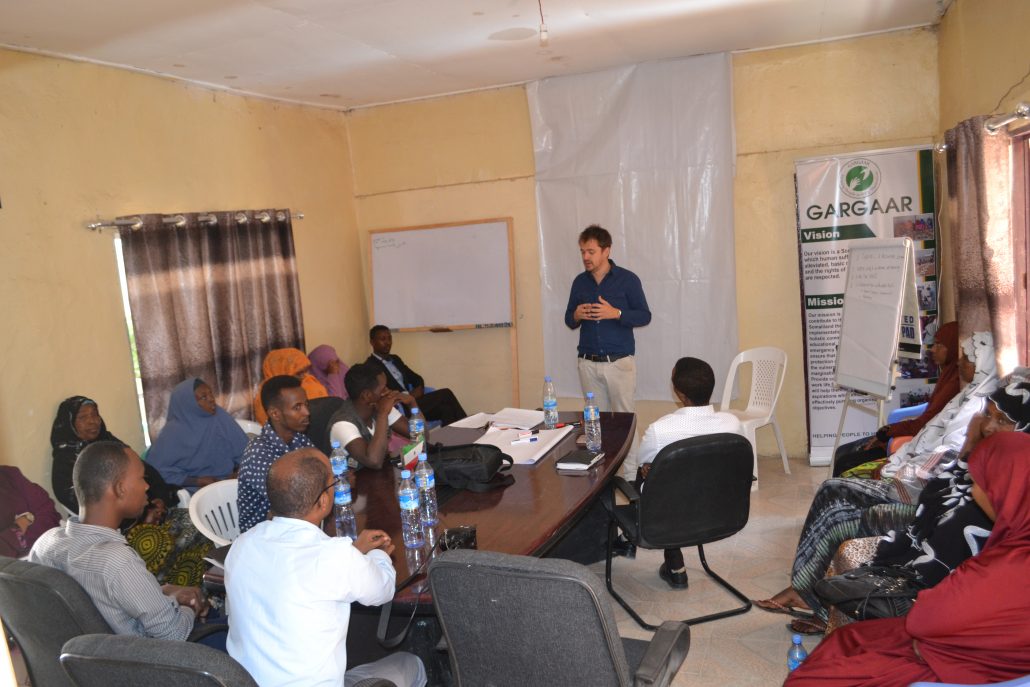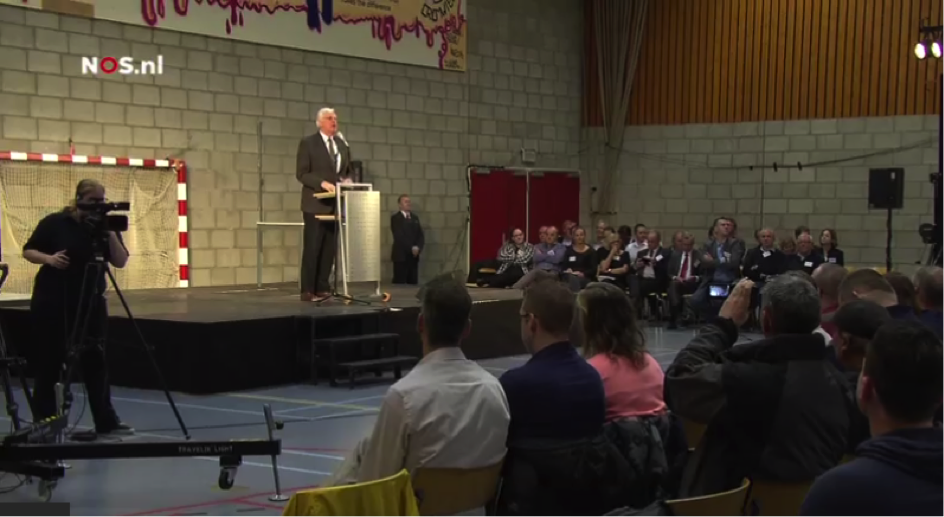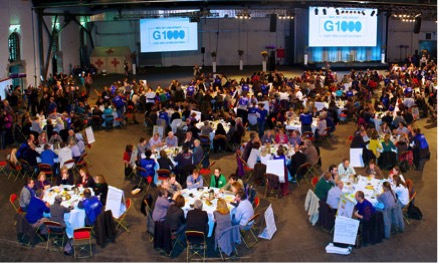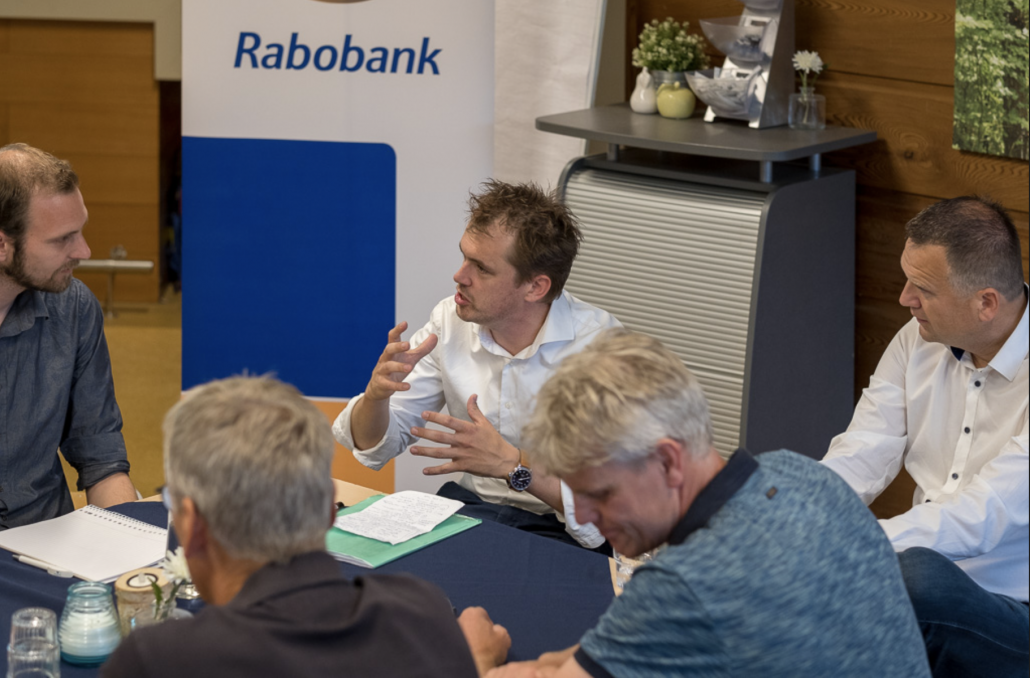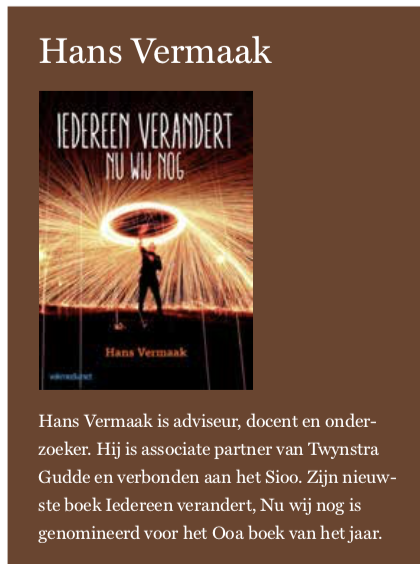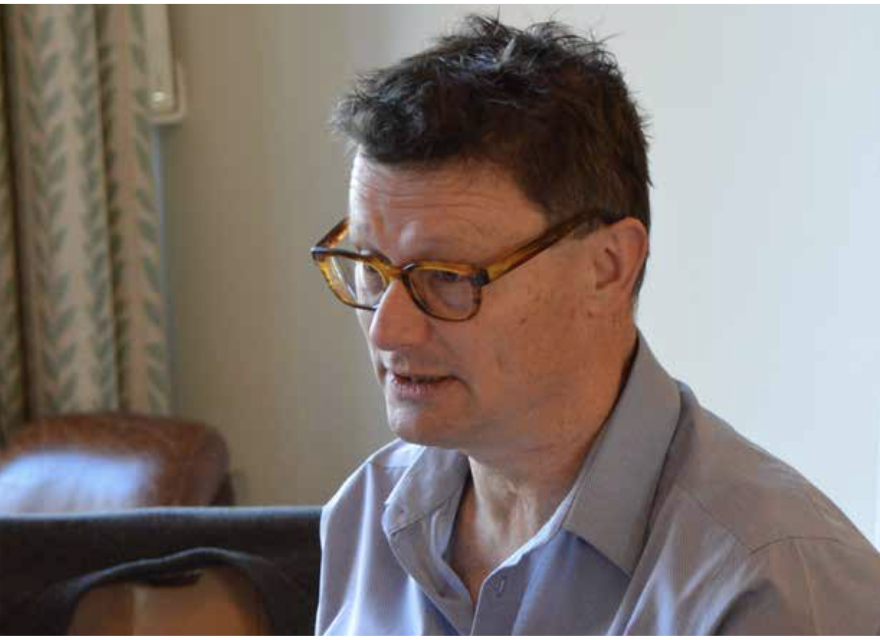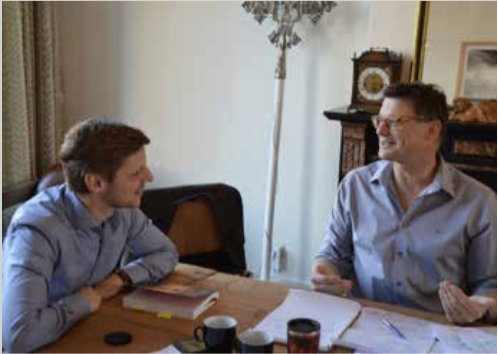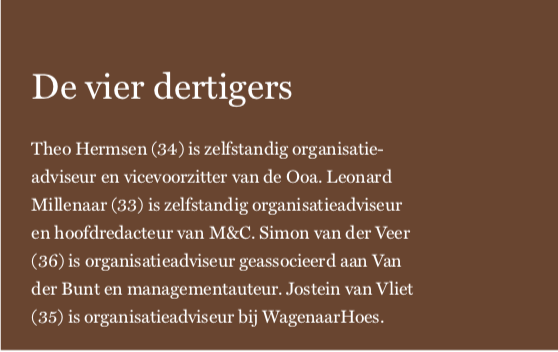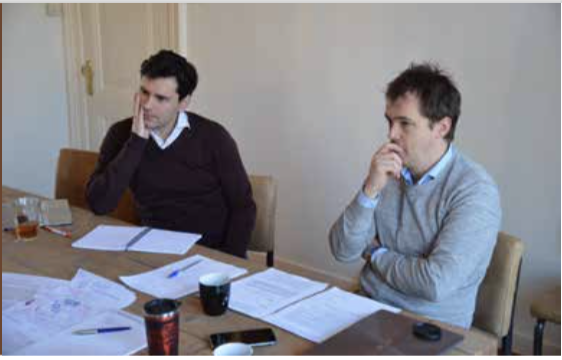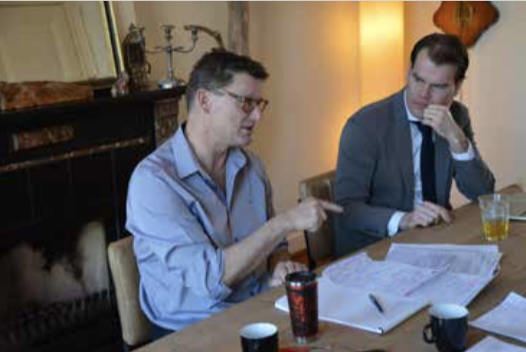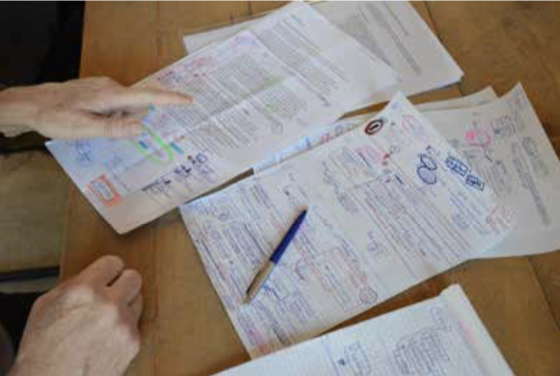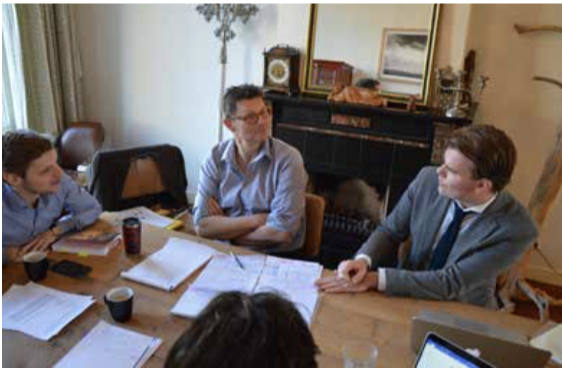On the edge of innovation
On Making Choices When It Gets Really Exciting
 This article appeared in the Journal for Guidance Studies (2019 8 (4), 50-57). In this article, I describe and reflect on two exciting moments in an advisory assignment. I find myself, in the heat of the moment, facing a fundamental choice as a facilitator. Why do I step forward in one situation and step back in another? As a facilitator of groups, I prepare sessions well. However, the most exciting and valuable moments cannot be prepared in advance. That’s when you face a choice. Intuitively, you do something. Or nothing. In this article, I investigate two moments. The context is a faculty at a university where the collaboration and cohesion among professors are under pressure.
This article appeared in the Journal for Guidance Studies (2019 8 (4), 50-57). In this article, I describe and reflect on two exciting moments in an advisory assignment. I find myself, in the heat of the moment, facing a fundamental choice as a facilitator. Why do I step forward in one situation and step back in another? As a facilitator of groups, I prepare sessions well. However, the most exciting and valuable moments cannot be prepared in advance. That’s when you face a choice. Intuitively, you do something. Or nothing. In this article, I investigate two moments. The context is a faculty at a university where the collaboration and cohesion among professors are under pressure.
I begin the article with a brief outline of the context. I will then zoom in on two situations. I sketch my plan in advance (intended), describe what happened (actual), and describe my thoughts and doubts during the exciting moment. I conclude with several working principles that help me when it gets really exciting.
- THE CONTEXT:
Over the years, a faculty at a university has increasingly begun to work in a multidisciplinary manner. A key goal of the dean is to promote that collaboration so that the walls between the organizational units disappear and the quality and focus of research and education increase.
From the recently conducted self-evaluation, I understand that there is a significant struggle in securing research funding, finding the right balance between research, education, administrative tasks, and management, collaboration among the organizational units, and how decision-making occurs around budgets and appointments.
Their Question:
The question they ask me is whether the current organizational structure is still appropriate and whether this structure is the most optimal for conducting good research and good education, as well as for strengthening internal cohesion.
My Answer:
I notice that the client is particularly struggling with the ‘how.’ How does it actually work within our faculty? How does what happens come about? The ‘what’ seems to be reasonably in order at first glance, according to their self-evaluation. A working group has been established to address this theme, consisting of seven people within the faculty.
The first question posed to me is to look at the current structure of the faculty. I tell my client that adjusting the structure often does not bring about better collaboration and cohesion; on the contrary (Vermaak, 2017; Vermaak & De Caluwe, 2019). As an alternative, I propose that we first try to understand the dynamics of the faculty, between the units, and the dynamics between the heads of the units and management. In the first meeting, I make a preliminary diagnosis of this dynamic. Why do things happen as they do? What happens if we do nothing? What makes them run? What pays off, and who rewards it? What needs to change, and how can we reward that? I notice from the answers I receive that people do not have immediate responses to these questions.
I therefore propose an approach where we first work together to understand the dynamics (where do we get in each other’s way and where can we capture more synergy). The goal is to make a good diagnosis. Based on that, we can eliminate obstacles or stimulate collaboration. If it turns out that the current structure is problematic, it is always possible to make adjustments. But in that order. Structure follows content and dynamics.
My Proposal for a Concrete Approach:
My proposal is to investigate the dynamics of collaboration in various places within the faculty. An initial intervention is to organize a working session with a representative group from the faculty, focusing on the central theme of collaboration. This helps me get to know the issue and the dynamics between the main players. Based on this session, we will gain a better understanding of what is happening here and can determine our subsequent strategy based on that.
SITUATION 1: A WORK SESSION ON COLLABORATION
Situation 1: In Advance
Situation 1 is an afternoon meeting in which we have invited a representative group from the faculty to discuss the theme of “collaboration.” Based on their own case studies, we try to get an idea of how current collaboration is proceeding. We also examine whether there is a problem, where bottlenecks are located, and what opportunities for improvement exist. It is also intended that everyone formulates a concrete experiment on how they can contribute to improving collaboration.
The program serves as a guideline for me. I keep space to deviate from the plan if the situation or issue demands it. At the same time, my client also needs a clear narrative for the participants about why they are invited to this session.
Situation 1: During
The session initially proceeds according to plan. Based on their own case studies, the participants engage in an interesting discussion about how collaboration works for them. They talk harmoniously about meetings where everyone discusses the content but where the process can sometimes be overlooked. They also discuss their hesitance to claim others’ time. Doubts about the added value of collaboration come up. Is it necessary? After all, individual assessments are made.
Nothing seems to be wrong. Not even when I ask them to formulate their own experiment to bring about improvement. They come up with great experiments. Until I ask them: what do you need to continue with this? Then the session becomes tense. Someone responds, “I came here to think along, not to contribute to that.” Another says, “No, I’m not going to do that; management should do it.” Management responds, “It’s not about what the faculty can do for you, but what you can do for the faculty.” I immediately sense: this is what it’s about; the issue unfolds before my eyes. Initially, the above questions focus on me. But I literally decide to take a step back. Under the premise that this is apparently the conversation they need to have with each other.
What’s Going Through My Mind?
- I literally take a step back. The conversation is about how they collaborate with each other. I also have doubts. Am I doing this right? How does my client react? Because they are also coming under fire. Yet this is also the conversation they need to have with each other. My role is to facilitate them. To ensure that they can conduct the conversation in an orderly manner.
- My mind is working overtime. I see all sorts of things happening. People who do take the floor or deliberately do not. Filters and social desirability are increasingly being set aside, and responses to one another become more direct and intense. They no longer spare each other. I also think about the issue of collaboration. I notice that they find it easier to talk about and analyze (reflection) than to do something about the issue (action).All my gears are turning at full speed. At the same time, I am present in the here and now, facilitating the conversation. Making sure everyone gets a chance to speak. Ensuring they let each other finish. Following the conversation, summarizing it, and asking people for clarification. But I also see that the end time is now approaching quickly. However, it is now also the case that the real conversation comes to the fore in this session. But if no one starts that conversation, we will just keep going a little longer.
What unfolds is an interesting and heated discussion about collaboration. Where does ownership for collaboration lie? Who should take action on this? Should the teachers and professors do this, or should the dean? The question is also raised whether it is even a problem or merely a wish of the dean. It also becomes clear that there are different needs for collaboration. Some participants see more benefit in it than others, and how do we deal with that? Finally, someone notes that they gained a lot of energy from the first part of the session, but that their energy has now dropped to zero. I mention that this is the conversation that they should be having.
What’s Going Through My Mind?
- The remark that “energy has dropped to zero” resonates with me as well. I am facilitating the session, and I have prepared it together with my client. I ponder: do I want to end the session at a low point, or do I want people to leave feeling good? I feel in the moment: hey, here’s the issue. This is what it’s about. Happy ending or low point, it’s ultimately about discussing what needs to be discussed, right? Isn’t it strange that if the issue turns out to be tough, the session becomes tough as well? What helps me is that I mentally reframe the moment of high tension from something negative to something valuable. That helps.
- I also remind myself that I am not solely responsible for a successful session. We are responsible together. I made this clear with the group beforehand, agreeing that there is plenty of room to co-create and adjust the program. During the session, I reiterated this by checking with the group whether we were still having the right conversation and also adjusted a program component with the group, as it did not sufficiently come to the fore. Even now that it’s tense, the same applies to me.
It is now late, and we have run over by half an hour, at which point several participants indicate that they really need to leave. The dean thanks everyone. In close consultation with the group, we agree to take a good look at an appropriate next step. I indicate that my intention was to organize three more of these sessions. However, my conclusion from this session is that we still need to examine this carefully. We will come back to you with a follow-up proposal. That is accepted. After the session, I discuss with my client that I will evaluate the session with a number of participants and discuss the approach for the next steps with them.
SITUATION 2: A ‘HEATED’ MEETING OF PROFESSORS
Situation 2: In Advance
A few months later, I am present at the meeting of the board. The heads of the organizational units meet monthly. The dean, my client, has asked me to be present as an observer. I am the last item on the agenda and have been asked to provide an update on the progress of my advisory assignment regarding collaboration within the faculty. My client dreads this meeting every month. There is a lot of hassle, conflicts, and the conversation during this meeting often progresses very slowly. She asks me to be present because this is where the dynamics surrounding collaboration are most pronounced. The language of communication is English.
Situation 2: During
During the meeting, a conversation about personnel derails. The dean and a professor get into a conflict over a case regarding the appointment of a university lecturer. It escalates, and the rest of the meeting watches. As an observer, I do not feel authorized to comment on this. I decide to come back to this at the last agenda item, where my name is mentioned.
Moments later, another conflict arises between the dean and another professor. This time it is about a fund to stimulate educational policy. The conversation completely spirals out of control. Worse than the previous conflict. Even mutual trust is called into question. Things go from bad to worse, and they cannot find a resolution.
“I have had to bite my lip a few times, but now I feel the need to intervene in the conversation. What is happening here? I see two people disagreeing and not being able to resolve it. And this happened already at the agenda item about personnel policy.” The dean and the professor reflect on what is happening but fall back into the old conversation. I decide to intervene by summarizing what they are both saying and emphasizing their (good) intentions. “You (the professor, TH) want to protect the dean so she can make decisions herself. That she has to disappoint people within the faculty who do not receive funding. Let a committee handle that. You (dean) have worked hard on the memo, which also received a lot of criticism in the previous meeting. You have tried to address all the points as best as you can, and you are receiving the same criticism again in this meeting. That is frustrating.” The conversation then becomes increasingly reflective.
Gradually, the tension subsides. The professor indicates that he could also have complimented the dean on the work she has done. The dean removes the trust issue from the table. A reflective conversation begins about the functioning of the board. One member notes that it is good to occasionally have a meta-conversation: how do we conduct this conversation? Another mentions that it is important to have clear policies. Much of the policy regarding personnel and budgets is unclear and leads to confusion and hassle. Another says that we should also have a vision together about what kind of faculty we want to be and what our hiring policy is. At the end of the conversation, the dean notes that she always goes to this meeting with trepidation. This resonates with the others. “That cannot be the intention.” I notice that the sting has come out of the conversation. They decide to move on to the next agenda item.
What’s going through my mind?
- I feel the tension in my throat as I open my mouth. So, I begin with the sentence: “I’ve had to bite my lip a few times, but I feel the need to engage in the conversation now.” This gives me the space to see if my involvement will be tolerated. It seems they accept it. This is further reinforced when two other participants join me in helping to de-escalate the conversation.
- In the second conflict that arises, I think: I can’t just let this happen. I am indeed an observer, but my assignment is about collaboration, and I wasn’t invited to this meeting for nothing. So whether I want to or not, I am also a player, right? What also plays a role in my consideration is that it seems my client shows more courage by my presence.
- During the conversation, I primarily act as a kind of translator and interpreter. People keep going around in circles and are unable to reach a resolution. I try to prompt reflection on the conversation, stepping away from the content. They no longer listen to each other and make their own interpretations of what the other is saying. Therefore, I attempt to objectify those interpretations through questioning and validation. When I listen to you, do you mean this? If that’s what you mean, what effect does it have on you? You can see existing perceptions of the other person change right before your eyes. How do I look at you? How do you look at me? And how do we interact with each other? At that moment, my doubt about whether I am allowed to do this has vanished.
When we reach the agenda item for which I was originally invited, I ask: “Would you like to evaluate this meeting, or do you want to hear the status regarding collaboration?” The overall desire is not to evaluate the meeting anymore. “We’ve done enough of that now.” The mood has returned to normal. At least for a moment, it seems.
WHAT HELPS ME WHEN IT GETS REALLY TENSE?
While writing this article, I’ve also come to some working principles that help me when things get really tense during a session. What helps you in tense situations?
In advance:
Who knows the enemy and himself will not be endangered in a hundred battles;
Who knows the enemy but not himself will sometimes win and sometimes lose;
Who knows neither the enemy nor himself will be every battle in danger. (Sun Tzu)
Good Preparation
Thorough substantive preparation is fundamental for me. My motto: prepare 100% to let go of 80% and respond to what happens (Von Clausewitz, 1982). Prior to the session, I have carefully thought about the design of the program. I’ve formulated several working hypotheses about the issue based on the submitted cases. I also consider several scenarios that could occur, from the worst-case scenario to the most optimistic.
Being Clean: Your Body as a Resonating Chamber
I knew in advance that these wouldn’t be simple sessions. Nowadays, I no longer schedule any appointments before a tense session. My focus is solely on that one difficult session. I also make sure to arrive well in advance to set up the space and mentally prepare myself for the session. It helps me to be “empty and clear” and fully attentive to the group and their question (Burger et al., 2019). During the session, I want to use my body as a resonating chamber to feel what is happening. I aim to observe without bias and postpone my judgments. I once read my emails during such a session, which significantly distracted me. It really took some time to get back “into” it.
Consciously Choosing a Position as a Facilitator
On my way to the session, I ask myself: why am I here? WHY am I here? Why am I HERE? (Vermaak, 2017). I often ask myself this question in advance. It helps me to choose my position in a session and also helps me to stay grounded at the most tense moments.
During
Prepare your war and your battle plan well.
Forget this plan after the first skirmish.
Act and respond to the situation that arises with dedication and discipline.”
(Von Clausewitz)
Humble Inquiry – Together in Not Knowing
The fundamental attitude I often revert to in the heat of battle is humble inquiry (Schein, 2013). It’s about coming together in not knowing. It creates space to safely explore together: why are things happening as they are? Where multiple answers can emerge, or better said, where everyone has their own answer (Spanjersberg, 2016). As a facilitator, I ensure that there is room for a safe atmosphere where multiple truths can coexist. There is no right or wrong. I guide the process of exploring, questioning, and listening because that’s where I often see things go wrong.
Staying in Your Place
It’s great to ‘consciously choose your position’ in advance, but staying in your position or place is much more challenging (Kloosterboer, 2015). Especially when things get really tense. In these two situations, I find myself pushed out of my position at different moments. The client system places the issue or their hesitance to act regarding collaboration on my plate. “You’re the expert; just tell us.” By staying in touch with myself (why am I here?) and sensing where their hesitance lies, I can remain in my place and also refrain from taking over their space. This allows them to take it themselves. By asking questions, identifying possibilities, or taking a step back. By letting them converse with each other and allowing themselves to experience the discomfort. I must also resist the group’s desire for me, as the facilitator, to provide a ready-made answer. After all, it’s their issue, and I’m facilitating them in solving it.
Afterward
For everything, there is the right time. One can only master the timing of strategy through extensive practice – Musashi.
Just as a swordsman sharpens his own tools, so does the carpenter – Musashi.
Reflection, Reflection, Reflection
After both sessions, I conducted an extensive reflection. With my client, several participants, but also with some colleagues and my wife. To better understand: “What happened here?” That is the most important thing for me. It helps me to critically assess my own functioning and choices and sharpen my intuition. So that I better understand what occurred. How I can take that into the next moment when I have to make a choice in a split second. There is no time for that in the heat of battle. Therefore, my conviction is that the art of facilitation primarily consists of practicing, logging flight hours, reflecting on that, and honing your plan, approach, and intuition.
Why Do I Do This?
That is the question that occupies me the most after writing this article. Why do I “choose” this kind of assignments? It takes a lot of energy to be present. You see, feel, and think so much. I feel the pain and helplessness of the participants. It takes a lot of ‘detox time’ afterward to be a good father or partner at home. Yet often, satisfaction prevails. When two people have a bit more understanding for each other or when it’s possible to extract the sting from the conversation. When you can genuinely contribute as a facilitator. I’ve also discovered that this kind of high tension suits me and brings out my best.
What I still need to do is improve in facilitating these types of sessions. For that, I especially need and want to log more flight hours under high tension. To deepen professionally what good forms and designs are for discussing and managing conflicts. I would also like to be able to switch myself on and off better. So that I’m less nervous beforehand and can empty out and be clean again faster afterward. Right now, the session lingers on me for a long time, and I often worry all night. Will that ever decrease, or is it just part of it?
Theo Hermsen (1982) is an independent consultant, vice chair of the Order of Organization Advisors (Ooa), and affiliated as a lecturer with SIOO, HAN, and Rotterdam University of Applied Sciences.
References:
- Burger, Y. & Roos, A. (2019). Containment in executive coaching; a practical theory. Journal of Facilitation Studies, 8(2), 30-37.
- Clausewitz, C. von (1982). On War. Colchester: Penguin Classics.
- Kloosterboer, P.P. & De Vries, D.P. (2019). Organizational development; working with difference and safety. Journal of Facilitation Studies, 8(2), 12-22.
- Kloosterboer, P.P. (2015). Advising from the whole, the vital value of internal advice. Deventer: Vakmedianet.
- Moerkerken, S. (2019). More precise interventions in complex change issues. In Kessener, B. & Van Oss, L. (2019). More than the Sum of Its Parts. Deventer: Vakmedianet.
- Musashi, M. (1999). The Strategy of the Samurai. Amsterdam: Karnak.
- Spanjersberg, M. et al. (2016). Systems thinking in practice. Utrecht: Stili Novi.
- Schein, E.H. (2009). Helping. San Francisco: Berrett-Koehler Publishers, Inc.
- Schein, E.H. (2013). Humble Inquiry. San Francisco: Berrett-Koehler Publishers, Inc.
- Sun Tzu (2005). The Art of War. Utrecht: Kosmos Publishers.
- Vermaak, H. (2009). Enjoying tough questions. Deventer: Kluwer.
- Vermaak, H. (2017). Everyone changes, now it’s our turn. Deventer: Vakmedianet.




